While some national parks are renowned for their beautiful landscapes, others are notable for their local ecosystem, which includes a variety of animals and plants. Saguaro National Park in Arizona falls into the latter category. This park gets its name from the saguaro cactus (Carnegia gigantea), which can reach an impressive height of up to 66 ft.
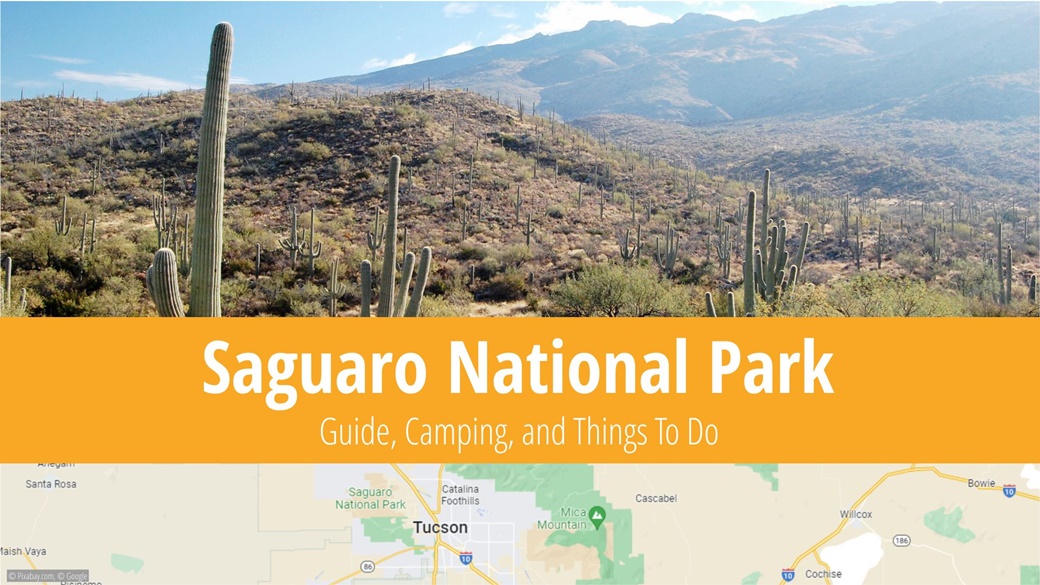
Table of Contents
- Saguaro National Park Information
- Exploring Saguaro National Park
- Best Time to Visit Saguaro National Park
- Entrance Fees for Saguaro National Park
- Getting to Saguaro National Park
- Accommodations in Saguaro National Park
- Tips and Recommendations for Visiting Saguaro National Park
- Photos of Saguaro National Park
Saguaro National Park Information
Saguaro National Park, located in the Sonoran Desert near Tucson, is divided into two sections. The Tucson Mountain District is positioned 16 mi west of downtown Tucson, and the Rincon Mountain District is situated 20 mi east of downtown. Saguaro cacti populate both parts, and it takes approximately 30 to 45 minutes to travel from one area to the other, depending on the current traffic. With an area of 143 sqmi, Saguaro National Park is comparatively smaller in size. In 2021, the park welcomed 1,079,786 visitors.
The park was designated as a national park on October 14, 1994, after being preserved as a national monument for the preceding 61 years. The highest point in the park is Mica Mountain in the Rincon Mountains, standing at 8,665 ft.
The flora of Saguaro Park is primarily comprised of the aforementioned saguaro cacti, which typically grow to a height of 39 ft to 59 ft and can weigh up to 10 tons. With its distinct shape and side branches, the saguaro has become an unofficial symbol of the American deserts. Interestingly, these side branches only begin to grow when the cactus is around 60 years old. The cactus flower, the state flower of Arizona, along with hundreds of other plant species in the park, are primarily prickly pear and other cacti types.
The animals that call this park home are typically those adapted for desert life. Scorpions, snakes, tarantulas, lizards, frogs, desert dogs, foxes, and a variety of birds are commonly found. Cougars and black bears also inhabit the higher elevations of the Rincon Mountain in the eastern part of the park.
Exploring Saguaro National Park
The most straightforward way to view the giant cacti is by driving through the desert on one of the two scenic routes. The unpaved, 6 mi-long Bajada Loop Drive goes through the cactus forest in the western part of the park. Similarly, Cactus Forest Drive, an unpaved 8 mi-long road, runs through the eastern section. These roads can also be traversed by bicycle.
For those interested in hiking, there are several trails in the eastern section:
Desert Ecology Trail
This easy, 1,312 ft trail offers information about the plant life in the park.
Freeman Homestead Trail
This 1 mi trail leads to an old homestead, with mature saguaro cacti lining the path.
Cactus Forest Trail
This 2 mi trail, partly accessible to cyclists, runs through a cactus forest.
Ridge View Trail
This 2 mi trail leads to a spot that offers a beautiful view of the entire Tanque Verde Ridge canyon.
Ruiz & Coyote Wash Trails
This near 4 mi loop leads through the desert and countryside, providing beautiful views of the valley and cacti.
Hope Camp Trail
This 7 mi trail leads from the Camino Loma Alta Trailhead through two abandoned campsites with windmills, water tanks, and silos.
Saguaro Park is also a popular spot for photographers, particularly for capturing breathtaking sunrises and sunsets.
Throughout the year, both sections of the park offer ranger-led activities, typically involving field lectures on geology, flora, fauna, or history. These activities are free to attend.
Best Time to Visit Saguaro National Park
Saguaro National Park is open 364 days a year, only closing for Christmas.
A visit during the summer months can be intense due to high temperatures, often exceeding 104 °F during the day. However, evenings are much cooler, dropping to a pleasant 68 °F. If you plan to visit during the summer, remember to wear a hat, use sunscreen, and stay hydrated.
Winters in Saguaro are mild, with daytime temperatures around 68 °F and evening temperatures dropping to a manageable 41 °F. Occasional frost is not unusual. The temperature difference between summer and winter is substantial. Rainfall is minimal throughout the year.
If you’re interested in cacti or wildflowers, plan your visit between late April and early June when the saguaro cacti bloom. Predicting the exact time of the bloom can be challenging as the white flowers bloom at night and wilt by the next day. If pollination occurs, red fruits will grow on the cactus.
Average Temperatures and Visitor Numbers in Saguaro National Park
The average temperatures in Saguaro National Park and the number of visitors are based on data from the National Parks Service, averaged over the years 2017-2021.
| Max Temp | Min Temp | Precipitation Days | Visitors | Popularity | |
|---|---|---|---|---|---|
| January | 66 °F | 41 °F | 3.6 | 107 148 | 🟧🟧🟧 |
| February | 70 °F | 45 °F | 3.3 | 138 230 | 🟧🟧🟧 |
| March | 75 °F | 48 °F | 2.9 | 159 613 | 🟥🟥🟥🟥 |
| April | 82 °F | 54 °F | 1.4 | 104 726 | 🟧🟧🟧 |
| May | 91 °F | 63 °F | 1.1 | 58 927 | 🟨🟨 |
| June | 100 °F | 72 °F | 2.5 | 38 983 | 🟩 |
| July | 99 °F | 75 °F | 11.3 | 45 691 | 🟩 |
| August | 97 °F | 75 °F | 12.4 | 47 281 | 🟩 |
| September | 93 °F | 70 °F | 5.7 | 41 912 | 🟩 |
| October | 84 °F | 59 °F | 2.8 | 58 971 | 🟨🟨 |
| November | 73 °F | 48 °F | 2.4 | 81 080 | 🟨🟨 |
| December | 66 °F | 41 °F | 3.9 | 85 958 | 🟨🟨 |
Entrance Fees for Saguaro National Park
The entrance fee for Saguaro National Park is $25 for a car and all its occupants, and $20.00 for a motorcycle. For those entering on foot, the fee is $15.00 per person. In both cases, your payment allows you to stay in both parts of the park for up to 7 days.
If you plan to visit more than one national park in the USA over the course of a year, consider purchasing the America the Beautiful pass. With this pass, you can enjoy free admission. This pass can be purchased for $80.
Getting to Saguaro National Park
To reach both sections of the park, I suggest renting a car. This will give you the flexibility to explore the park at your own pace. It’s advisable to choose a car with a 4×4 drive. Although buses run to Tucson and Southwest operates budget flights to the city, there are no bus services within the park itself.
Directions to Saguaro West – Tucson Mountain District
| Starting Point / Destination | Distance | Driving Time | Route |
|---|---|---|---|
| Albuquerque | 467 mi | 6 hours 50 minutes | View Route |
| Dallas | 966 mi | 14 hours | View Route |
| Los Angeles | 480 mi | 8 hours | View Route |
| Phoenix | 109 mi | 2 hours | View Route |
| Tucson | 19 mi | 40 minutes | View Route |
Directions to Saguaro East – Rincon Mountain District
| Starting Point / Destination | Distance | Driving Time | Route |
|---|---|---|---|
| Albuquerque | 443 mi | 6 hours 20 minutes | View Route |
| Dallas | 944 mi | 13 hours | View Route |
| Los Angeles | 506 mi | 7 hours 15 minutes | View Route |
| Phoenix | 134 mi | 2 hours | View Route |
| Tucson | 13 mi | 30 minutes | View Route |
Parking is available at the visitor centers, but you can also park your car on the roadside if necessary.
Accommodations in Saguaro National Park
🏨 Hotels
The city of Tucson, nestled between the two sections of the park, offers a wide range of accommodation options. Over a hundred hotels, motels, and other lodging establishments are operational in and around Tucson.
⛺ Campsites
There are no campsites directly within Saguaro National Park. However, about 4 mi south of the Red Hills Visitor Center, you can find the Gilbert Ray Campground, which charges a fee of $10.00 per campsite per night.
For those seeking an adventure, camping is allowed in the eastern section of the park in the Rincon Mountain area.
Tips and Recommendations for Visiting Saguaro National Park
ℹ️ Visitor Centers
I suggest starting your tour of Saguaro National Park with a visit to one of its two visitor centers:
- Red Hills Visitor Center
This information center, located in the western section of the park, is open every day from 9:00 am to 5:00 pm, excluding Christmas Day. Here you can enjoy views of the nearby mountains, explore exhibits about the Sonoran Desert, and purchase a souvenir. - Rincon Mountain Visitor Center
This center is open 364 days a year, closed only on Christmas Day, from 9:00 am to 5:00 pm. The center, though smaller than the Red Hills Visitor Center, features 15 plants typical of the Sonoran Desert. You can find these plants, along with their descriptions, right outside the center.
👍 Good to Know
The most significant risk in Saguaro Park is dehydration. During the summer months, it is advised to drink at least 3.5 litres of water a day. Therefore, always carry plenty of water with you and drink even if you’re not thirsty. Make sure to stock up on your supplies in Tucson. Additionally, beware of cactus spines and venomous rattlesnakes. They usually strike when they feel surprised or threatened.
Before visiting the park, make sure to download and save maps and free information brochures to your phone. They don’t occupy much space and can be really helpful!
Photos of Saguaro National Park
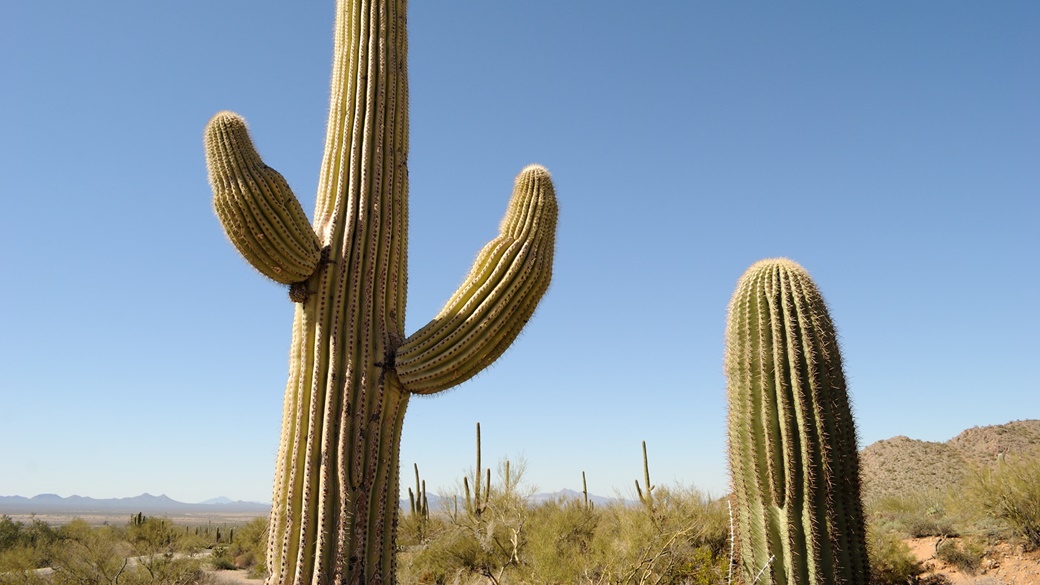
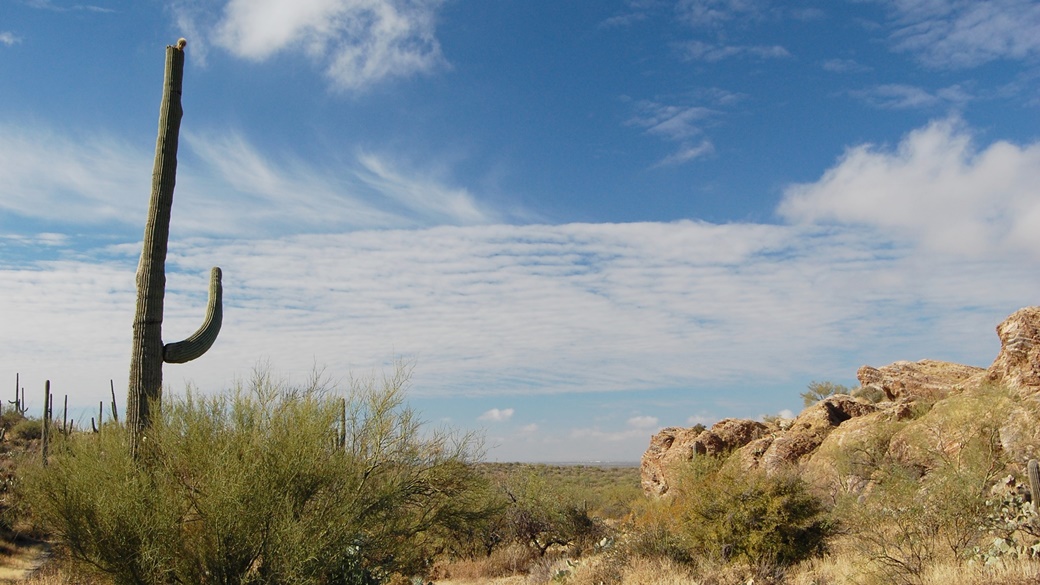
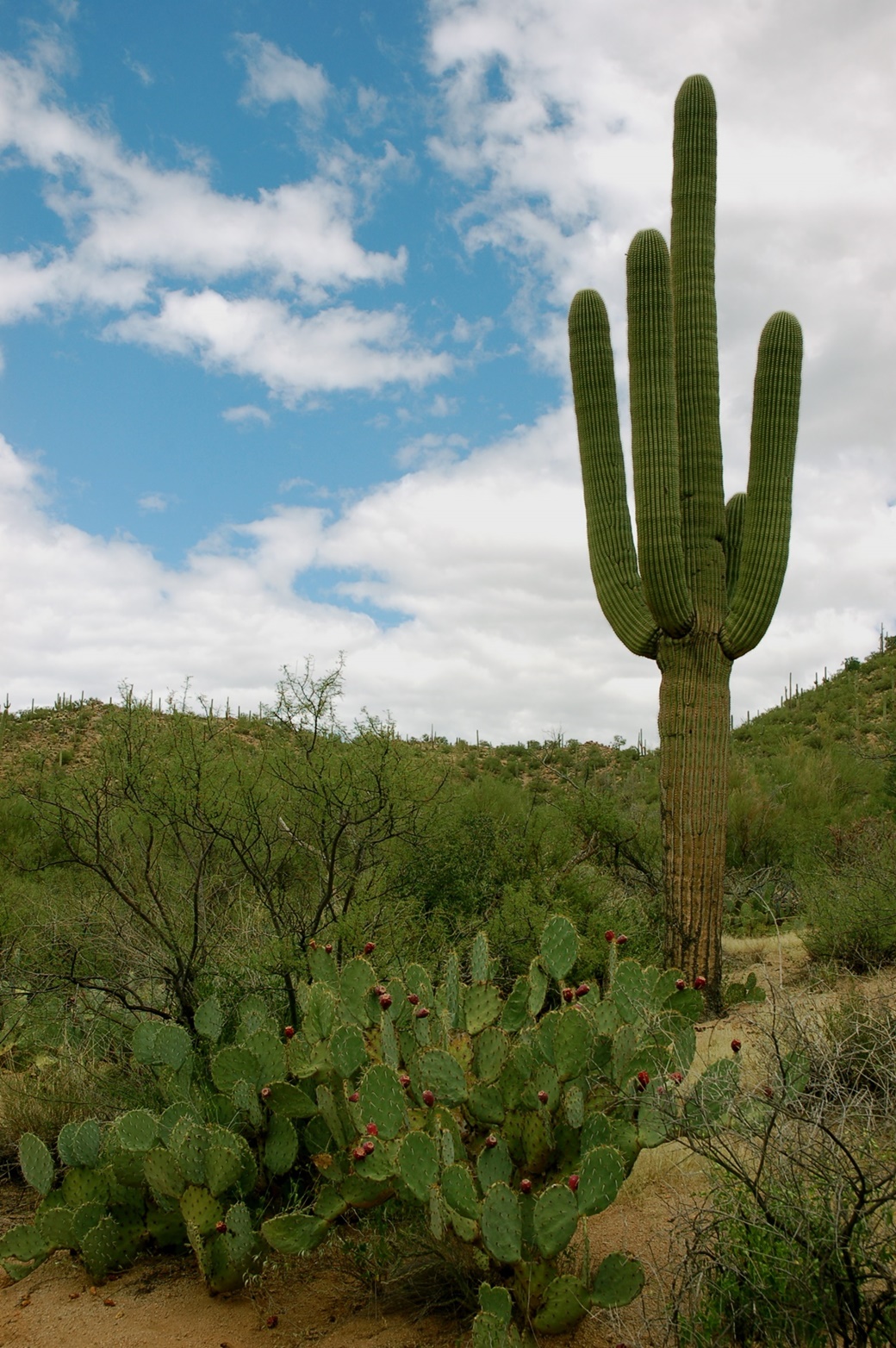
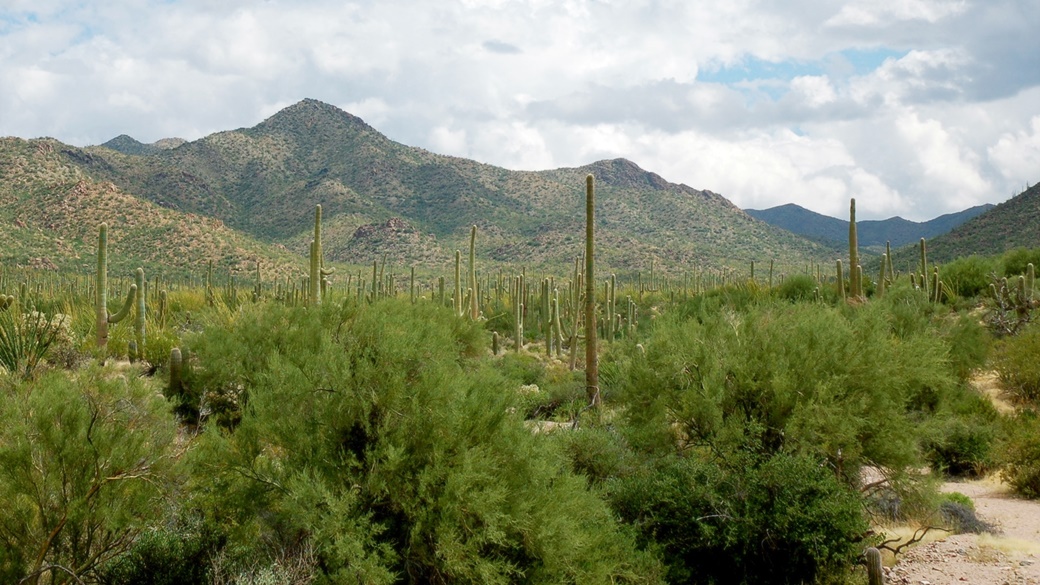
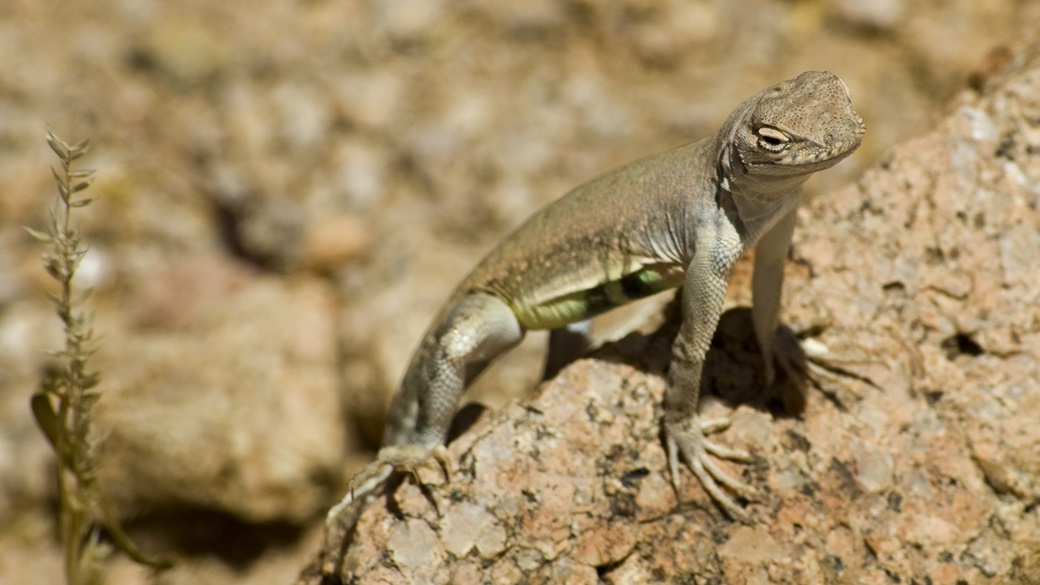
US National Parks
- National Parks of the USA – Map, List and Annual Pass
- America the Beautiful Pass 2025 – How It Works, Cost & Parks
- Timed-Entry Reservation for US National Parks (2025 GUIDE)
Travel Guides to USA National Parks

 10 Best Photo Places in the USA
10 Best Photo Places in the USA




Contribute with Your Question or Personal Experience